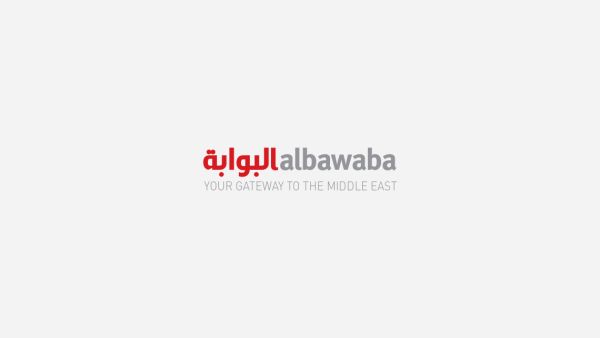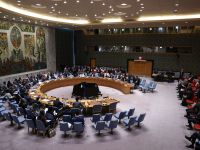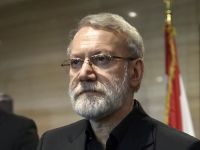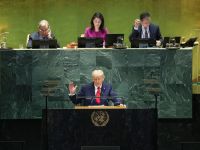With one-fourth of the world's proven oil reserves, Saudi Arabia is likely to remain the world's largest oil producer for the foreseeable future. During 1999, Saudi Arabia supplied the United States with 1.4 million barrels per day of crude oil, or nearly 16 percent, of U.S. crude oil imports during that period.
Information contained in this report is the best available as of January 2000 and is subject to change.
GENERAL BACKGROUND:
With oil revenues making up around 80-85 percent of total Saudi export earnings (and around 35-40 percent of the country's gross domestic product, or GDP), Saudi Arabia's economy remains, despite attempts at diversification, heavily dependent on oil (although investments in petrochemicals have increased the relative importance of the downstream petroleum sector in recent years).
Although the collapse in oil prices of 1998 and early 1999 now has ended, and the country's economic outlook has improved greatly, Saudi Arabia continues to face pressures to reform its economy and to open up to increased private investment. For 1999, real GDP grew only about 0.4 percent, but the outlook for 2000, assuming higher oil prices continue, is for more rapid growth of 5.1 percent.
Saudi Crown Prince Abdullah has stated that a period of austerity lays ahead, and that the "boom period" for Saudi Arabia and other Gulf oil producing countries is over.
For Saudi Arabia, another particular challenge is the country's rapid population growth, young population, and the challenge of finding good jobs for these people (outside of the public sector, which is overstaffed and a drain on the country's budget).
Over the past decade or so, Saudi economic growth has failed to keep pace with population growth, resulting in decreased per capita incomes. Saudi Arabia's government officially (in its 1995-2000 development plan) has accepted the need to reduce state involvement and increase private sector -- including foreign -- participation and investment in the economy, but has moved very slowly in this direction (largely due to fears of job losses for Saudi citizens, as well as resistance by the private sector and some members of the Saudi royal family).
Saudi Arabia also has moved slowly towards cuts in government subsidies (although it increased the price of gasoline by 50 percent -- to about $0.90 per gallon -- in May 1999), increases in taxes, or financial sector reform.
Currently, there are signs that this pace may be picking up, with privatization now seen by Saudi leadership (Crown Prince Abdullah, in particular) as a "strategic choice," and with creation of a new "Supreme Economic Council" (charged with boosting investment, creating jobs for Saudi nationals, and promoting the private sector) in September 1999.
Changes to rules governing foreign investment in Saudi Arabia are being considered, as are changes to the country's tax code (taxes on foreign business profits currently range as high as 45 percent) and foreign ownership rules (currently, foreigners are allowed to own up to 49 percent of any joint venture, need a Saudi sponsor, and are not allowed to own property).
In one relatively small move in the direction or reform, in late October 1999, international investors were permitted to invest in local shares through established open-ended mutual funds.
Also pushing liberalization of the Saudi economy is Saudi Arabia's desire to join the World Trade Organization (WTO). Saudi Arabia hopes to be admitted to the WTO by the end of 2000, but this could be delayed by a variety of issues, including the degree to which Saudi Arabia is willing to increase market access to its banking, finance, and upstream oil sectors.
Ultimately, WTO membership likely would result in significant changes to the Saudi economy, which currently is characterized by relatively high tariff rates, subsidies, and a variety of restrictions on the free market.
The goal of WTO membership is in part due to Saudi Arabia's desire to attract foreign investment, and in part to its push for new markets for the country's petrochemical industry.
In November 1999, King Fahd stated that "the world is heading for...globalisation" and that "it is no longer possible for [Saudi Arabia] to make slow progress." In the context of successfully becoming integrated into the global economy, Fahd also emphasized the importance of regional unity among Gulf states -- economically, politically, and militarily.
A customs union, for instance, among Gulf Cooperation Council (GCC) countries, has been proposed. Currently, goods from GCC countries are exempt from all Saudi import duties, as long as 40 percent of their value has been added within the GCC and the producing company is owned at least 51 percent by GCC citizens.
Saudi Arabia also has a policy known as "Saudiisation," the goal of which is to increase employment of its own citizens by replacing 60 percent of the estimated 5-6 million foreign workers in the country.
In order to do so, Saudi Arabia has stopped issuing work visas for certain jobs, has moved to increase training for Saudi nationals, and has set minimum requirements for the hiring of Saudi nationals by private companies.
State subsidies and losses by unprofitable state-owned enterprises are large contributors to Saudi Arabia's budget deficit. The country's finance ministry has called for an increased private sector role. At present, the private sector accounts for around 40 percent of Saudi Arabia's GDP (and 89 percent of employment) , but only 5 percent -10 percent of those employed in the private sector are Saudi nationals.
In December 1999, Saudi Arabia issued a cautious budget for 2000, with only a small (2 percent) increase in government spending and conservative assumptions about oil revenues. In other news, in early January 2000 Saudi Arabia announced that it was establishing an 11-member supreme "Council for Petroleum and Minerals Affairs."
The function of this council is uncertain at present (January 2000), but appears related to Saudi Arabia's overall goal of restructuring its economy and possibly accelerating private sector involvement in the country's energy sector.
OIL:
Saudi Arabia (not including the Saudi-Kuwaiti "Neutral Zone") contains 261 billion barrels of proven oil reserves (more than one-fourth of the world total) and up to 1 trillion barrels of ultimately recoverable oil.
Saudi Arabia is the world's leading oil producer, exporter, and holder of spare oil production capacity. Saudi Arabia's location in the politically volatile Arabian Gulf region adds an element of concern for its major customers, including the United States.
Saudi Arabia agreed at the March 1999 OPEC ministerial meeting to cut its crude oil output to 7.438 MMBD. As of October 1999, Saudi Arabia reportedly was producing around 7.5 MMBD, excluding the Neutral Zone.
Although Saudi Arabia has about 77 oil and gas fields, over half of its oil reserves are contained in only eight fields, including Ghawar (the world's largest onshore oil field, with estimated remaining reserves of 70 billion barrels) and Safaniya (the world's largest offshore field, with estimated reserves of 19 billion barrels).
Ghawar's main producing structures are, from north to south: Ain Dar, Shedgum, Uthmaniyah, Farzan, Ghawar, Al Udayliyah, Hawiyah, and Haradh. Overall, Ghawar alone accounts for about half of Saudi Arabia's total oil production capacity. Saudi Arabia has fewer than 1,430 wells, which is extremely low relative to the volume of oil the country produces.
Saudi Arabia produces a range of crude oils, from heavy to super light. The lightest grades are produced onshore, while the medium and heavy grades come mainly from offshore. The Ghawar field is the main producer of 34o API Arabian Light crude, while Abqaiq (a super-giant field with 17 billion barrels of proven reserves) produces 37o API Arab Extra Light crude.
Since 1994, the Hawtah Trend (also called the Najd fields), which includes the Hawtah field and smaller satellites (Nuayyim, Hazmiyah) south of Riyadh, has been producing around 200,000 bbl/d of 45o-50o API, 0.06 percent sulphur, Arab Super Light.
Overall, the Najd fields are estimated to contain 30 billion barrels of liquids and major reserves of natural gas. Offshore production includes Arab Medium crude from the Zuluf (over 500,000 bbl/d capacity) and Marjan (270,000 bbl/d capacity) fields and Arab Heavy crude from the Safaniya field.
The Neutral Zone contains about 5 billion barrels of proven oil reserves. Within the Neutral Zone, Japan's Arabian Oil Co. (AOC) operates two offshore fields (Khafji and Hout).
This represents Japan's most significant upstream oil interest, with 80 percent of revenues going to AOC and 10 percent each to Saudi Arabia and Kuwait. Texaco, meanwhile, operates three onshore fields (Wafra, South Fawaris, and South Umm Gudair).
AOC's concession on the Saudi side expires on February 27, 2000 (an extension has been requested), and on the Kuwait side in January 2003. Saudi Arabia has stated that it would like AOC, and Japan in general, to increase its investments in Saudi Arabia (including more than $1 billion in a railway linking remote mining areas to export terminals), as well as its purchases of Saudi oil, before it renews AOC's drilling rights in the Neutral Zone.
Japan has offered around $4 billion in commercial loans to Saudi Arabia for possible investment projects in desalination, power generation, and petrochemical development.
Saudi Arabia is a key oil supplier for the United States, Europe, and Japan; however, in recent years, Western Hemisphere producers (Venezuela, Canada, and Mexico) have challenged Saudi Arabia's dominance in the U.S. market. Asia now takes about 60 percent of Saudi Arabia's crude oil exports, as well as the majority of its refined petroleum product exports.
Europe is Saudi Arabia's second largest oil export market, followed by the United States. Through the first 10 months of 1999, Saudi Arabia exported 1.47 MMBD of oil (1.37 MMBD of crude) to the United States. For this time period, Saudi Arabia ranked third (after Venezuela and Canada) as a source of total (crude plus refined products) U.S. oil imports, and first for crude only.
Saudi Arabia is eager to maintain and even expand its market share in the United States for a variety of economic and strategic reasons. For the first 10 months of 1999, Saudi Arabia's share of U.S. crude oil imports was 15.8 percent, down slightly from 16.3 percent for the same period in 1998.
Faced with a sharp oil price decline, domestic financial difficulties, a declining Saudi share of world oil markets (down to 12 percent from 17 percent in 1980), a desire to solidify relations with the United States, and increased competition from a variety of new, relatively expensive oil areas (the Caspian, offshore West Africa, deepwater Gulf of Mexico, etc.), Saudi Oil Minister Ali Naimi and Crown Prince Abdullah met with several U.S. oil companies (former Aramco partners Chevron, Exxon, Mobil, and Texaco; plus Arco, Conoco, and Phillips Petroleum) in September 1998 regarding possible upstream investment in Saudi Arabia's oil and, possibly even more so, natural gas industries, plus increased investment in petrochemicals.
The Saudis asked the companies to submit proposals for possible projects in these sectors -- the first such invitation since these industries were nationalized in the mid-1970s, and potentially a major policy shift.
In recent months, however, top Saudi officials have stated that additional foreign involvement in the country's upstream oil sector was not necessary at the present time, as opposed to the downstream oil and natural gas sectors, where Saudi Arabia is "fully open to investors," according to Oil Minister Naimi.
In October 1999, Naimi stated that Saudi oil policy was based on four facts: 1) the largest oil reserves and among the lowest production costs -- around $1.50 per barrel -- in the world; 2) maintenance of significant spare oil production capacity; 3) a national economy closely linked to the oil industry; and 4) a stable political and economic system. Naimi also stressed the importance of "a stable international oil market" where "wide and rapid swings in prices are undesirable."
Saudi Arabia's oil production totaled about 8.5 MMBD in 1999 (7.8 MMBD crude oil), including 666,000 bbl/d of natural gas liquids, and also including about 270,000 bbl/d of crude oil produced from its half-share of the Saudi-Kuwaiti Neutral Zone. This compares with an OPEC crude oil production quota of 7.438 MMBD (as of April 1, 1999).
Saudi Arabia has been producing close to its OPEC quota (production of natural gas liquids is not counted against the OPEC quota), but about 3 MMBD below its sustainable oil production capacity. Of Saudi Arabia's total oil production capacity, about 65 percent -70 percent is considered light gravity, with the rest either medium or heavy.
Despite its roughly 3 MMBD of spare production capacity (the largest in the world), Saudi Arabia is continuing to invest -- albeit slowly -- in the development of lighter crude reserves. Priority has been given to developing the Shaybah field in the remote Empty Quarter area bordering the United Arab Emirates.
Shaybah contains an estimated 7 billion barrels of premium grade 40-42o API sweet crude oil, and ultimately is slated to produce 500,000 bbl/d of crude oil and 870 million cubic feet/day of natural gas.
Shaybah began production in July 1998 at around 250,000 bbl/d. Overall, the Shaybah project will cost $2-$2.5 billion, and will include three gas/oil separation plants (GOSPs) and a 395-mile pipeline to connect the field to Abqaiq, Saudi Arabia's closest gathering center, for blending with Arabian Extra Light crude (Berri and Abqaiq streams).
As Shaybah light crude production increases (to 500,000 bbl/d), Saudi Arabia likely will cut production of Arab Light from overworked parts (water content is rising) of the Ghawar reservoir, as well as Arab Heavy from offshore. Two U.S. companies are playing a major role in the Shaybah project: Parsons Corporation (project management) and Bechtel (construction).
Source: United States Energy Information Administration
© 2000 Mena Report (www.menareport.com)







